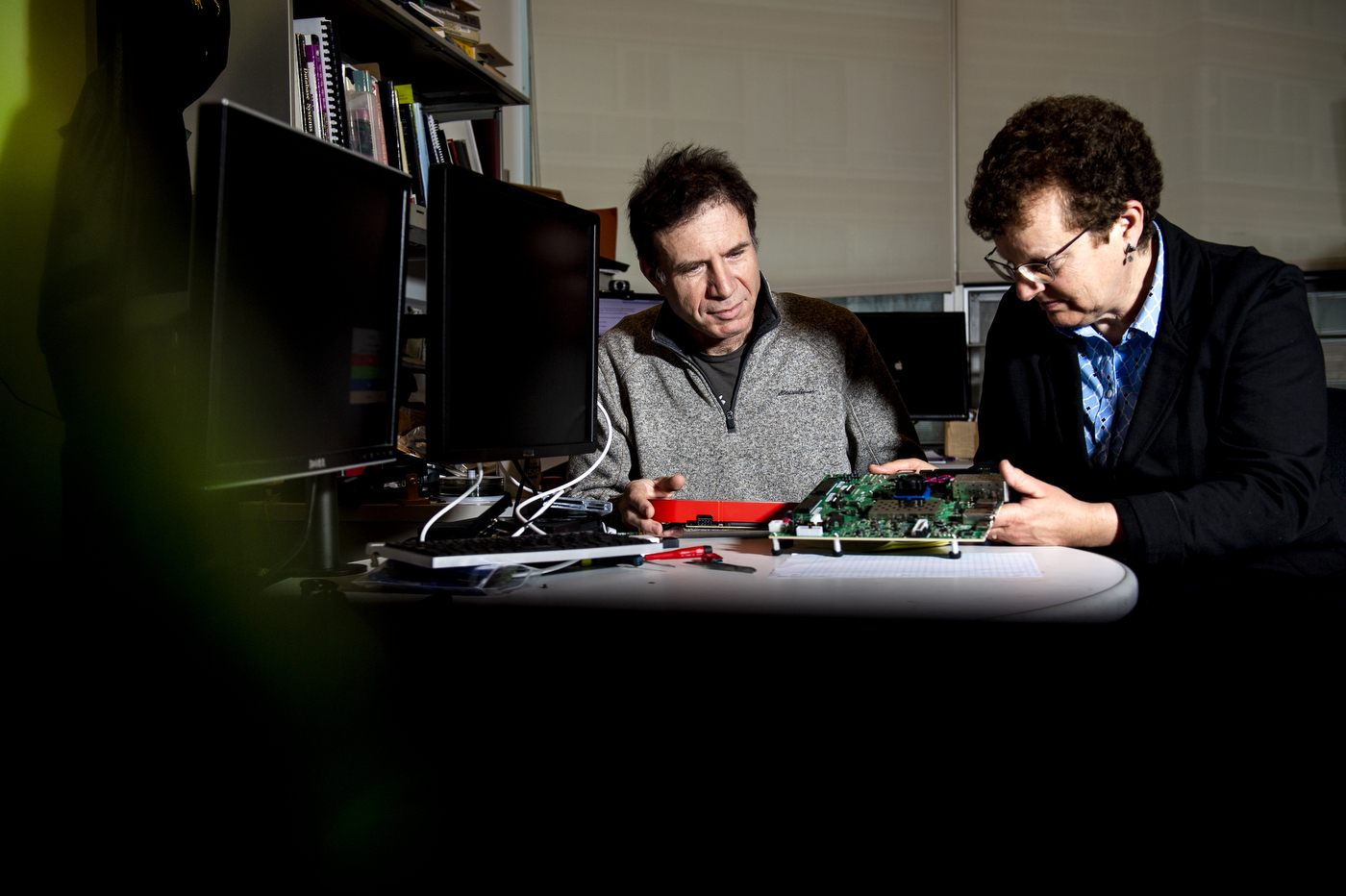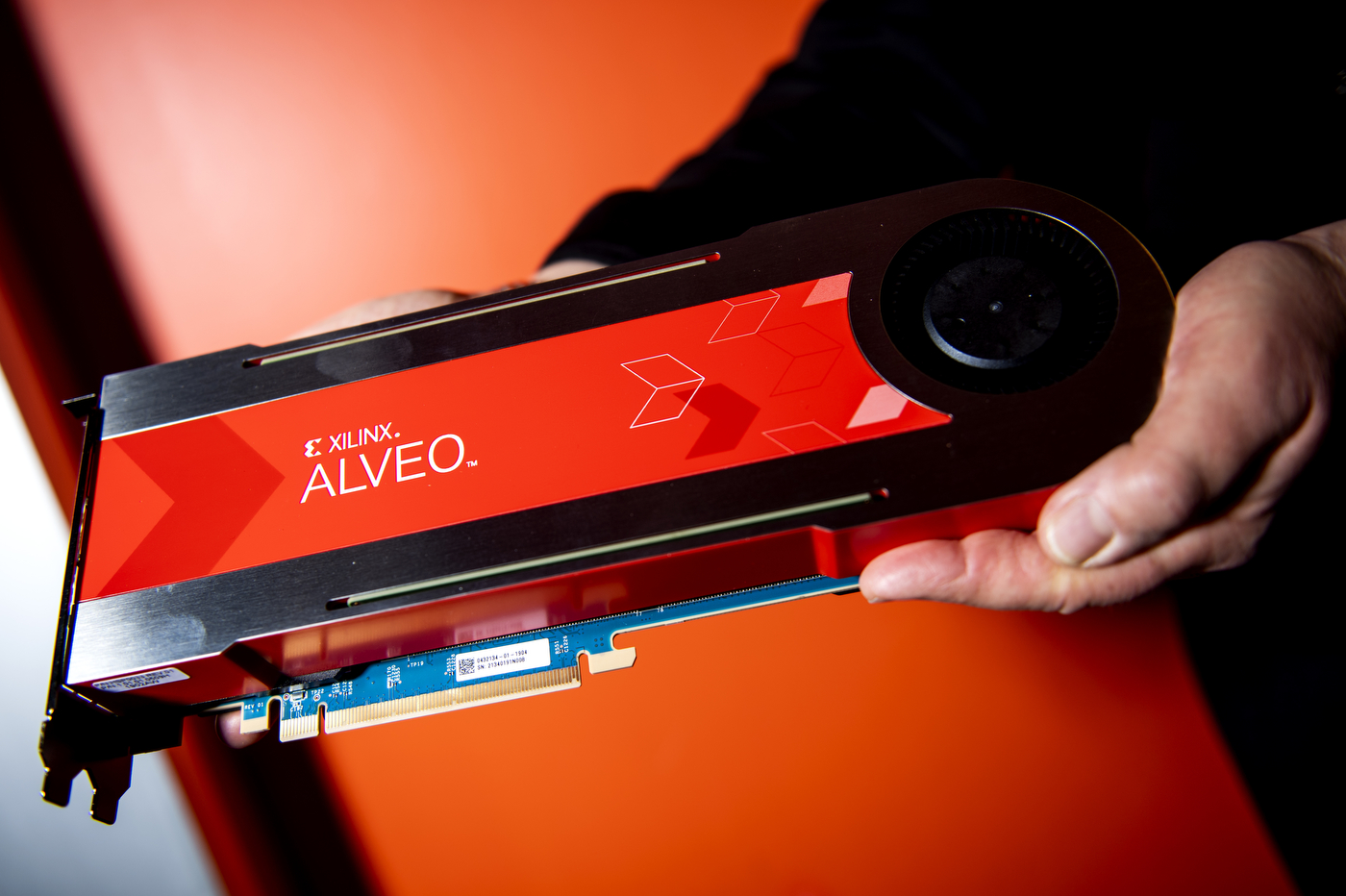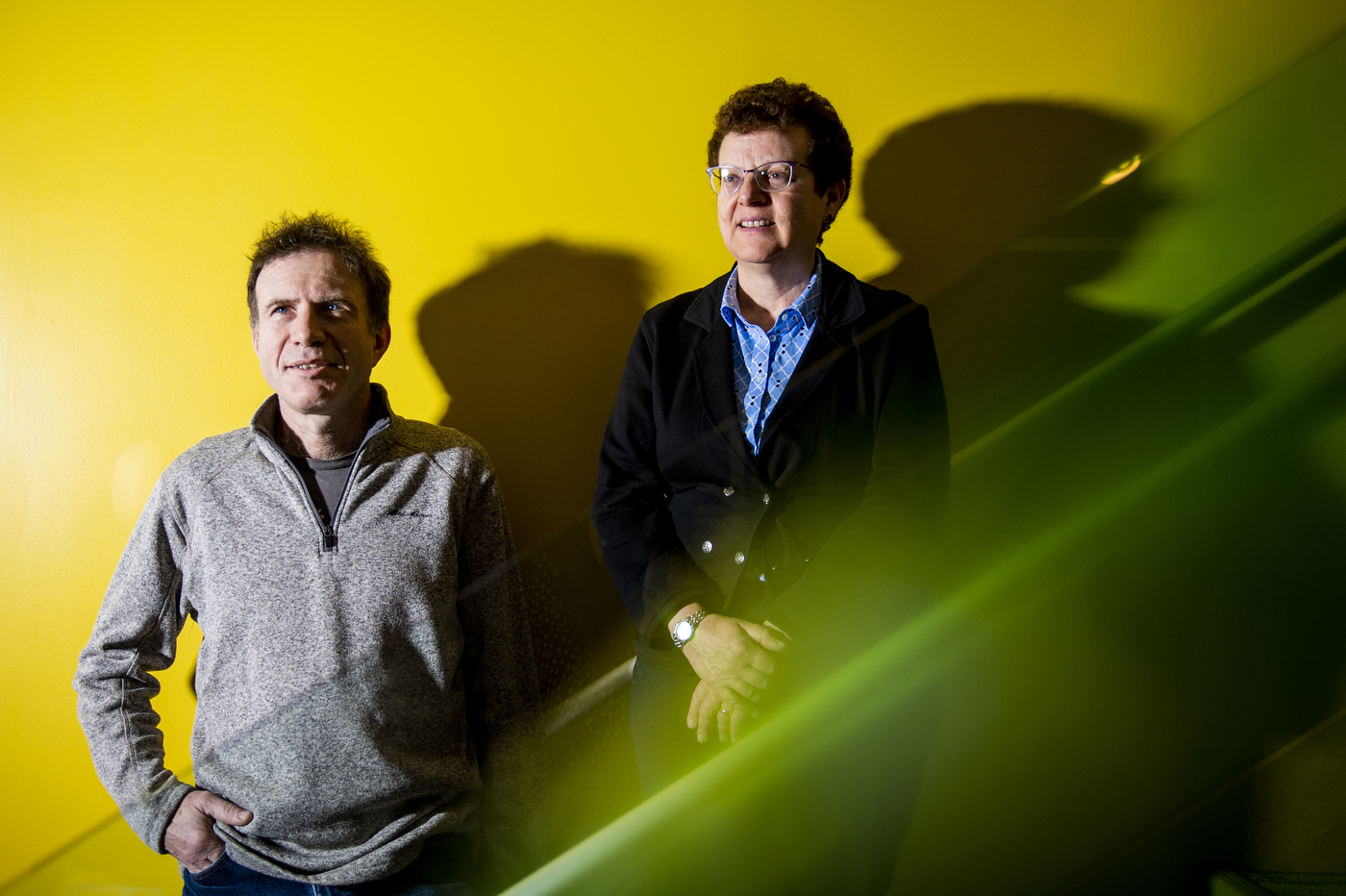Desnoyers and Leeser Awarded $1.55M NSF Grant to Accelerate Innovations in Cloud Technologies
ECE Affiliated Faculty Peter Desnoyers (PI), Khoury College, and ECE Professor Miriam Leeser (co-PI) are the Northeastern University leads of $1.55M five-year NSF grant that is part a $5M total award in collaboration with the University of Massachusetts Amherst (lead) and Boston University. The research project, titled “CCRI: Grand: Developing a Testbed for the Research Community Exploring Next-Generation Cloud Platforms,” will construct and support a testbed for research and experimentation into new cloud platforms—the underlying software which provides cloud services to applications. This testbed will accelerate innovation in cloud technologies; technologies affecting almost all of computing today. In providing capabilities that today are only available to researchers within a few large commercial cloud providers, it will allow diverse communities to exploit these technologies, “democratizing” cloud computing research, and allowing increased collaboration between the research and open source communities. The new testbed will combine proven software technologies with a real production cloud enhanced with programmable hardware – Field Programmable Gate Arrays (FPGA) – capabilities not present in other facilities available to researchers today.
The future of computing is a better, faster cloud
Main photo: A circuit board with a field-programmable gate array, which can be reconfigured any number of times to suit a researcher’s needs. Photo by Ruby Wallau/Northeastern University
Every time you open a weather app, watch a video on youtube, or search the internet for the best Thai food near you, you’re accessing and processing data with software stored on servers scattered around the world. This is what the tech industry calls “the cloud.”
Cloud computing hasn’t just changed how we use our phones or store our pictures. It has also changed how research is conducted, allowing scientists to, essentially, rent the computers necessary to store and process massive amounts of data. They don’t need to buy their own servers and banks of hard drives—they just pay for cloud services when they need them.
But even using hundreds of powerful computers linked on the cloud, the calculations necessary to model the changing climate or discover new potential drugs can take weeks, or even months, to run.
Researchers at Northeastern, Boston University, and the University of Massachusetts Amherst, are working together to build their own cloud computing testbed, to find ways to make this technology more effective and efficient.
 |  |
More adaptable hardware and new, innovative software will allow researchers to simultaneously improve cloud services and provide them to the broader research community. Photo by Ruby Wallau/Northeastern University
“We’re trying to push the edge of cloud computing,” says Miriam Leeser, a professor of electrical and computer engineering at Northeastern. “What should the next generation of cloud services look like?”
Most cloud computing research is done by Google, Microsoft, and Amazon, says Peter Desnoyer, an associate professor of computer science, because those companies operate most cloud services.
“The insights they get from operating these large systems and observing users’ needs are key to many advances,” Desnoyer says. “Yet they’re also cautious, because they don’t want to disrupt service, making it hard for them to take large leaps.”
This cloud computing testbed will allow researchers to develop new and innovative cloud services, and simultaneously provide those services to the broader research community.
“There’s an infinite set of arbitrary things we could create—some of them are useful, most of them aren’t,” Desnoyers says. “Offering actual services to real users helps us find the innovations that are actually useful.”

Associate professor of computer science Peter Desnoyers and electrical and computer engineering professor Miriam Leeser are working to develop the next generation of cloud computing. Photo by Ruby Wallau/Northeastern University
The researchers have received a grant from the National Science Foundation for up to $5 million over the next five years, shared among the universities. They will be integrating aspects of previous cloud research projects, including the Massachusetts Green High Performance Computing Center and Mass Open Cloud.
So far, Leeser and Desnoyers have been awarded more than $1 million to support their aspects of the research.
Leeser’s focus is on the hardware. To process large amounts of data, most current cloud computing systems rely on graphics-processing units, known as GPUs, which were originally developed to render images. These chips can perform multiple calculations simultaneously (researchers call this “parallelism”), which makes them useful for running scientific simulations, as well as video games.
“People have gotten really good performance using GPUs,” Leeser says. “But they are also high power and the kind of parallelism they do is restricted.”
For this new testbed, Leeser is installing more flexible chips called field-programmable gate arrays, or FPGAs. These computer chips are more energy-efficient than graphics processing units, and their circuits aren’t fixed—they can be reconfigured any number of times to suit a researcher’s needs.
“It’s hardware you can program like it’s software,” Leeser says. “You can build a complete architecture that’s designed for the problem that you want to solve. It’s much more adaptive”
Desnoyers is working on the software, finding ways for researchers to efficiently share resources without interfering with each other. To effectively serve the larger community, the testbed must be able to temporarily isolate computers working on a specific problem or redirect resources from one group to another, while maintaining a secure system.
“We’re trying to unify it in a way that can handle the radically different ways that researchers use these systems,” Desnoyers says. “You can’t make something that works for everyone, but you can do a lot better than we do today. And the advantages are not just being able to operate your computers more efficiently; there’s also a huge gain in scientific collaboration that comes when scientists from different fields work together on these systems.”
The project is just getting started, but the plan is to grow it into a testbed that will support researchers around the country.
“The academic community has always had a strong role in the evolution of these technologies,” Desnoyers says. “Our goal is to enable computer scientists across all of this community to work on the research that will build the cloud of the future.”
by Laura Castañón, News @ Northeastern
Abstract Source: NSF
Cloud computing plays an important role in supporting most software we use in our daily lives. This project will construct and support a testbed for research and experimentation into new cloud platforms – the underlying software which provides cloud services to applications. Testbeds such as this are critical for enabling research into new cloud technologies – research that requires experiments which potentially change the operation of the cloud itself. The new testbed will combine proven software technologies with a real production cloud enhanced with programmable hardware – Field Programmable Gate Arrays (FPGA) – capabilities not present in other facilities available to researchers today. The combination of a testbed and production cloud allows a) larger scale compared to isolated testbeds, b) reproducible experimentation based on realistic user behavior and applications, as well as c) a model for transitioning successful research results to practice. The programmable hardware will be a unique resource enabling investigation into hardware acceleration techniques, and the community outreach portion of the project aims to identify, attract, and retain interested researchers, and to educate them in the use of the facility. The testbed offers a unique sustainability model, by allowing additional compute resources to be dynamically moved from institutional uses into the testbed and back again, providing a path to growth beyond the initial testbed.
This testbed will accelerate innovation in cloud technologies; technologies affecting almost all of computing today. In providing capabilities that today are only available to researchers within a few large commercial cloud providers, it will allow diverse communities to exploit these technologies, “democratizing” cloud computing research, and allowing increased collaboration between the research and open source communities. The community outreach activities of the project are targeted to researchers who explore complex distributed systems and cloud platforms, spanning a diverse range of backgrounds, institutions, and regions. Software tools will be developed to provide easy and efficient access by these researchers; tutorials, workshops, and webinars will offer training in the use of these tools and the testbed itself. The project will support educating the next generation of researchers in this field, and existing relationships with industrial partners of the affiliated production cloud will accelerate technology transfer from academic research to practical use.